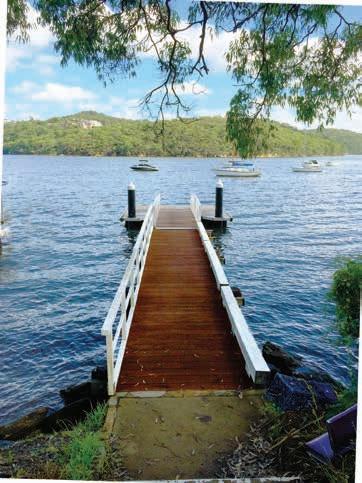
2 minute read
Personnel roll up their sleeves to save lives • Keep your best mate safe in ruff conditions
Personnel roll up their sleeves to save lives
Generous response from our team in Emergency Services Blood Challenge.
Marine Rescue NSW personnel saved more than 310 lives in the three months from the start of June - and not one of them was on the water.
Our volunteers and staff joined in the 2021 Emergency Services Blood Challenge, making a fantastic contribution during these testing times.
Together, between June 1 and August 31, our Marine Rescue Lifeblood Team contributed enough donations of blood and plasma between them to help save more than 310 other Australians’ lives. Commissioner Stacey Tannos thanked all those volunteers and staff members who took part in the Blood Challenge.
“This response is typical of the generosity we have come to expect from MRNSW people whenever they are asked to help their community,” he said.
“Our mission is to save lives on the water but the Blood Challenge is another way we can achieve that mission on dry land.”
Our people joined hundreds of emergency services volunteers and workers donating whole blood, platelets and plasma as part of the challenge.
Volunteers from MR Point Danger and Port Macquarie were among those who donated, along with Fleet Manager Kelvin Parkin and Greater Sydney Regional Operations Manager Glenn Evans.
Glenn reached an individual milestone, making his 100th plasma donation, in late June. Ronny Maroun, from Australian Red Cross Lifeblood, personally thanked each of our donors for their contribution in being a vital champion and helping keep Australia’s blood supply strong during this difficult climate.
Now that the challenge is complete, the need for blood is ongoing with 33,000 donations needed each week to help maintain hospital demand and treat patients undergoing cancer treatment, women in pregnancy, premature babies, trauma and burn victims.
Greater Sydney Regional Operations Manager Glenn Evans makes his 100th plasma donation during the Emergency Services Blood Challenge.

Dreaming of that new: Jetty, Floating, Pontoon or Marina Pen

We are in your area and able to provide a free no obligation quote!
Keep your best mate safe in ruff conditions
Boaters have been urged to keep their best friend safer by making sure their dog - as well as all the people on board - is wearing a lifejacket when they’re heading out on the water.
MRNSW volunteers last year rescued 123 dogs - more than two a week - along with more than 10,000 people from boats in trouble on NSW waterways.
Boating has boomed in popularity since the onset of the COVID-19 pandemic last year, with crews noting more and more boaters were taking their pooches out with them.
Like people, wearing a lifejacket will give your dog the best chance of surviving if the worst happens.
While swimming comes naturally to dogs, some breeds tire quickly, while others can be rapidly affected by cold water, making a lifejacket essential to keep them warm and
A lifejacket will protect the boater’s best friend.
afloat until help arrives. A dog’s lifejacket should be snug while allowing it to walk, run, jump and breathe without difficulty. If it’s too big, your dog may slip out of it or have difficulty swimming and staying afloat. Grab handles on the back will enable you to pull them back on board if they tumble into the drink.










